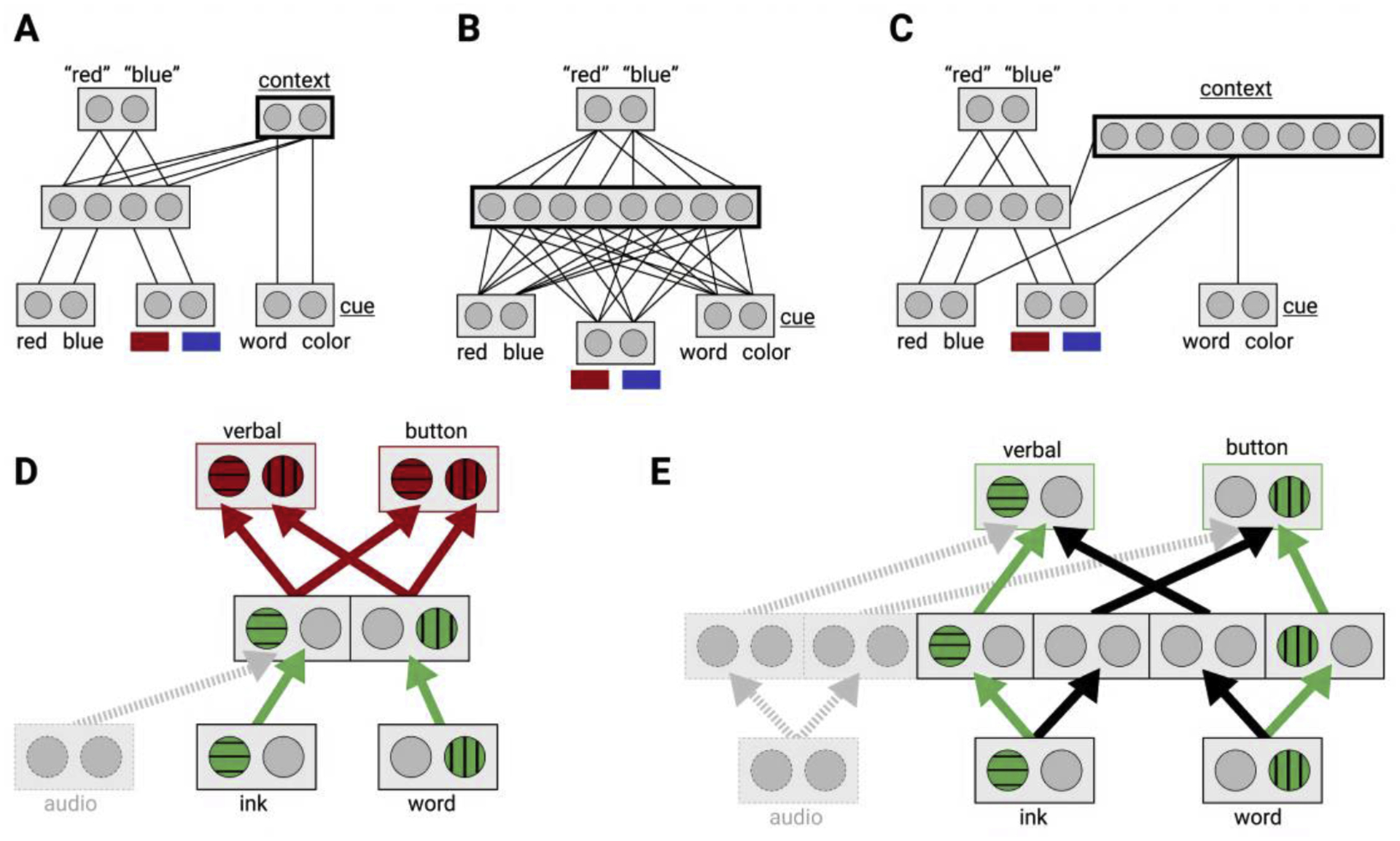Figure 2.

(a-c) Illustrations of control representations of different dimensionality across modulatory and transmissive architectures for cognitive flexibility. (a) A modulatory model of cognitive control based on the widely recognized Stroop model from Cohen et al. [1]. Localist units represent patterns of activity of a neural population. Input layers with the word and ink color feedforward to a hidden layer which feeds forward to a response layer at the top. A task cue input feeds forward to a low dimensional context layer. This is the control representation that biases the task-relevant response pathway to enable flexibility. (b) A transmissive architecture that achieves flexibility with a high dimensional hidden layer that mixes all inputs into separate pathways. Thus, the hidden layer is an expressive control representation that makes any combination of cue and stimuli available for direct readout by the response layer. (c) A modulatory model with a high dimensional context layer. This expressive control representation can use any combination of task cue and stimuli as a contextual input to bias the route from stimulus to response. (d)-(e) Illustrations of the tradeoffs of dimensionality for control. (d) A simplified representation of the architecture in 2a without the context layer and with an added output, following [32]. The combination of two input types and two ouput types makes four “tasks”. Arrows show pathways from input to output with active unites highlighted and distinguished by fill pattern. A low dimensional control representation can link an input to both verbal and button press responses. This is useful for fast learning; a new task involving auditory input can leverage this low dimensional representation to link to all available outputs. However, if two tasks are performed at once, there is cross-talk interference (red paths) (e) A higher dimensional control representation in the hidden layer, akin to 1b, separates the inputs across the tasks. This allows multitasking without interference, but a new task involving auditory input must learn entirely new pathways.
